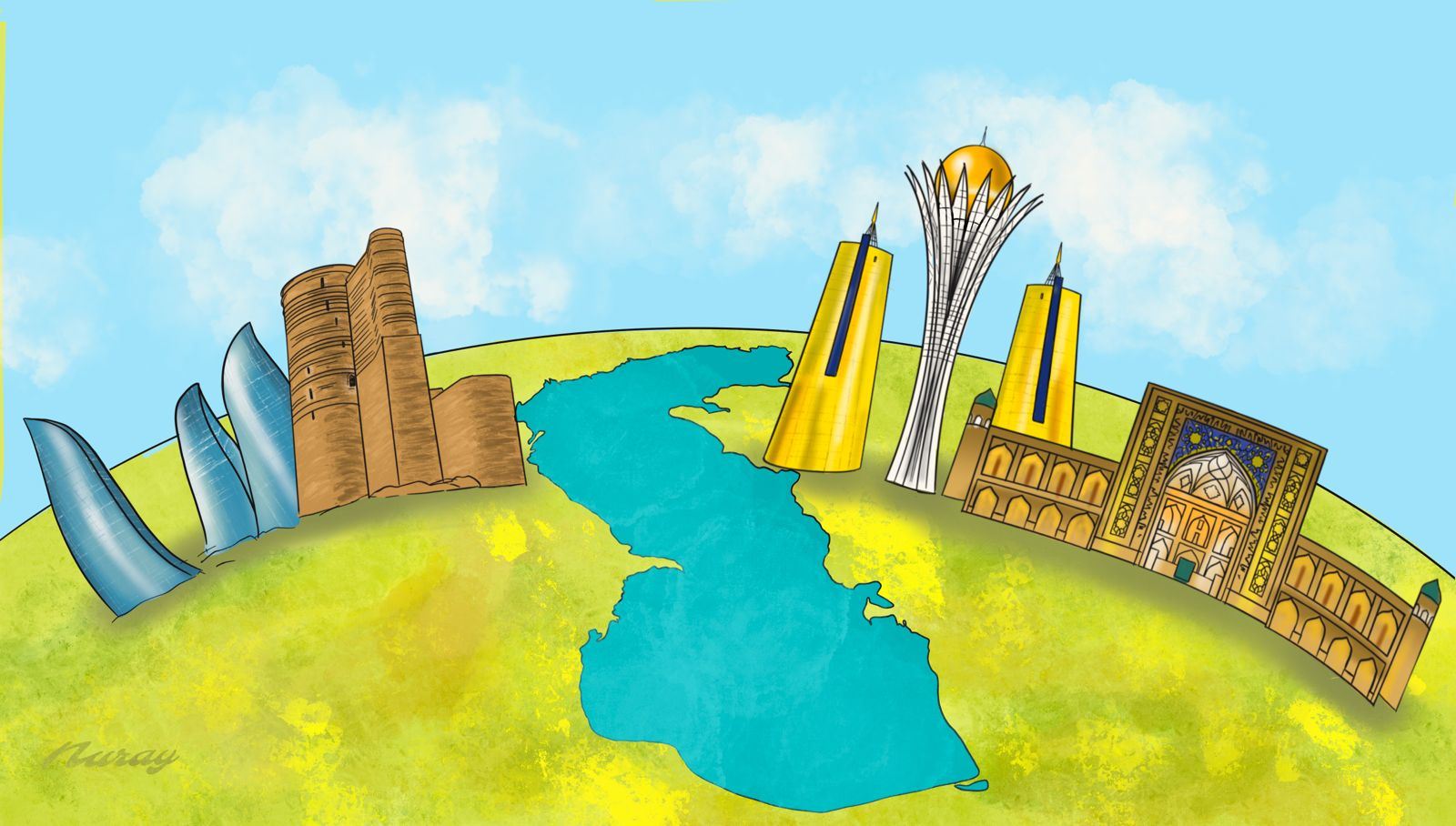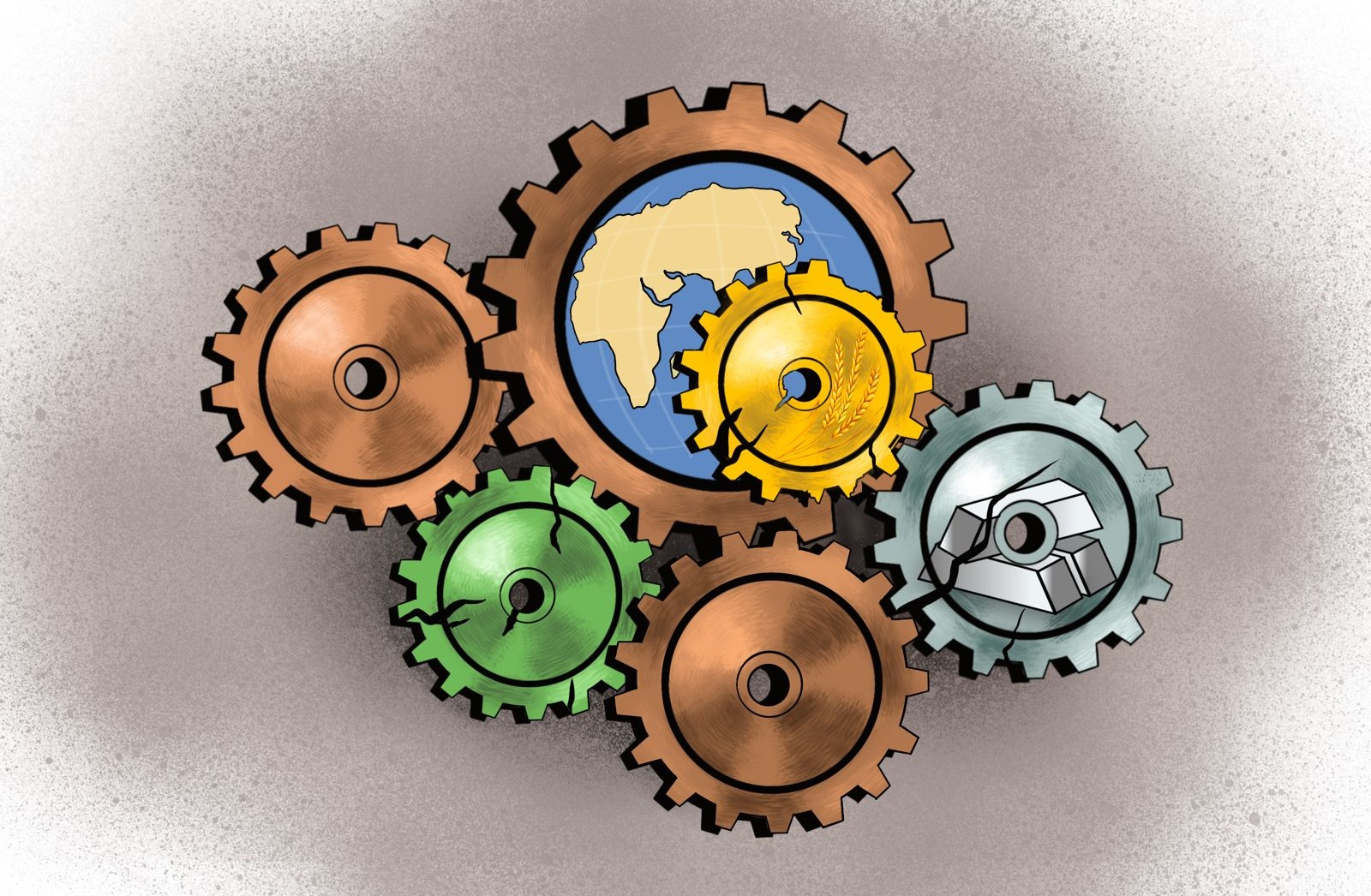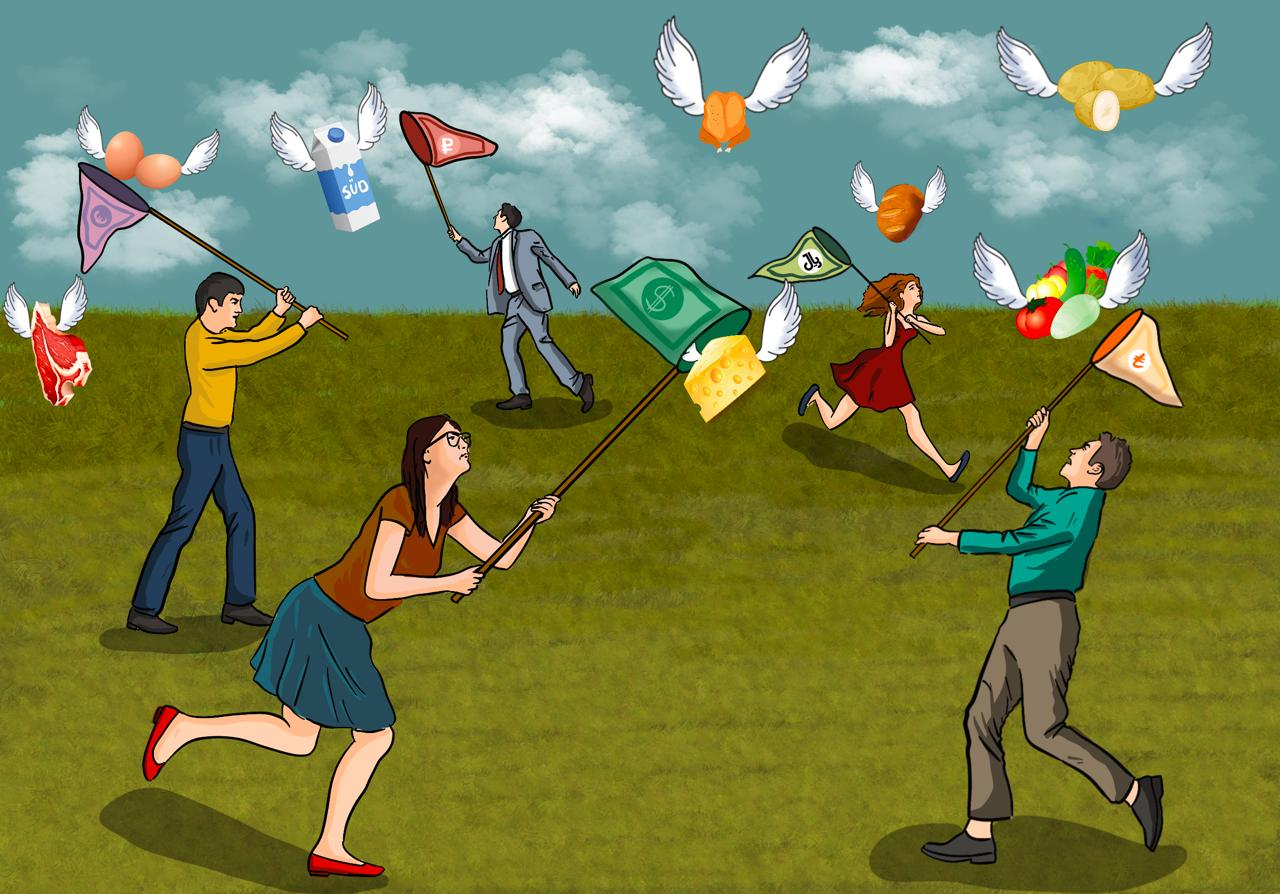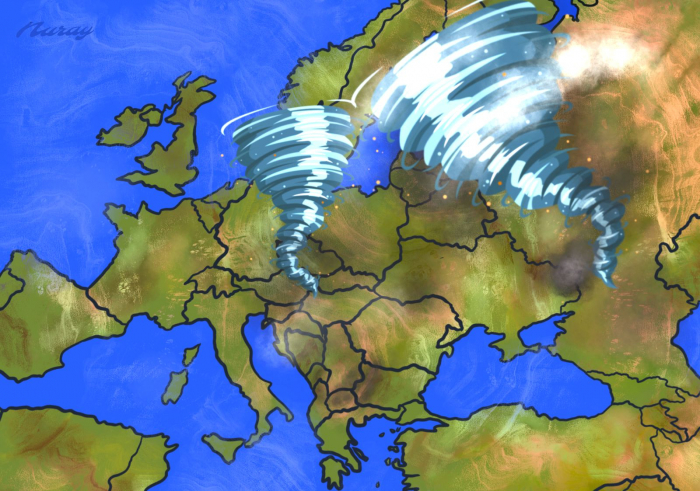
| The Analytical Group of AzVision.az |
The blooms of the ‘Back Garden’ of History | Long Read// The Turkic contributions into the development of civilization remain underestimated |
|
T
here is a nation that world historiography
has treated very unfairly. They write it off calling its past merely ‘nomadic’
and claiming it has contributed nothing to the development of humanity. They deny
the great offerings this nation has made to the development of civilization saying
‘culture cannot be created on horseback’ or ‘science cannot be developed in the
steppes’. This injustice has been continuing for many years. The time has come
for the situation to change and for the world to recognize the Turks for who they
truly are.
If no
culture is built on horseback, then no state can be built on the back of a horse
as well. You may capture and conquer, but not build. Therefore, a nation that has established 17 great
empires and around 200 states, large and small, would not be able to consist of
nomads ‘who lived their lives on horses’. There is no other nation on Earth
that has built so many great states in history. A world built on horseback Let us
simply respond to the ‘a life spent on
horseback…’ remark. Most scientists believe that the Turks were the first to domesticate the horse. This might not
be as important as the invention of the wheel, but still, it was a crucial
breakthrough in the development of civilization. The domestication of the horse introduced mankind to the concept of
speed. Everything – both movement and thought – was rather slow until then…
In other words, humanity must feel
obliged to Turks for taming speed. ‘Historians worldwide tend to speak more of Turks’ bellicosity and military prowess. Their intellectuality and scientific contributions are usually side-lined, whereas the Turkic literature, thinking and wisdom have played an exceptional role in universal civilization ’, says Roida Rzayeva, Doctor of Philosophy, head of the department at the Institute of Oriental Studies at Azerbaijan National Academy of Sciences, in her interview to AzVision.az. Western
historians insist on not wanting to understand that great conquests and empires established cannot be merely attributed to
nomadism and brute force. Turks are often portrayed as destructive forces
for civilizations. There are plenty of stereotypes of this ilk.
Unfortunately, Turkic historians also fall into this trap at times, focusing on the bellicosity, strength, and bravery of their ancestors. All the while, we must
not forget that warfare is an
exceptionally complicated undertaking to organize. ‘Valour of the warriors is indeed an important component, albeit far from being the only one. A victory on the battlefield and conquering a country with impregnable fortresses require a disciplined and trained army, skillful and talented officers and tackling multiple issues of armament, supply, and communications. Diplomacy should offer support, or neutrality at the very least, of third countries. In other words, only powers with a highly effective public administration can wage wars. Turks have repeatedly demonstrated their ability to build such states across history and other countries have actively dipped into their experience’, Radik Temirgaliyev, Kazakhstani historian and a Board Member of the Scientific and Educational Fund ‘Aspandau’, explains in his talk with AzVision. The
historian says the political might of
the Turkic states has always been based
on economic prosperity. For example, the heyday of urban culture in
Kazakhstan coincided with the reign of Turkic khaganates. The dramatic
prominence of Khwarazm and the intensive development of urban civilization happened
in the 11 th and 12 th centuries as the Turkic dynasty took
the reins in the country.
If there were about 80 thousand people living in Constantinople in the mid-15 th century, the population grew to 700 thousand as the Ottomans conquered the city and renamed it Istanbul. That is, the Turks did not play the role of barbarians and destroyers in the universal historic arena, but that of creators, who gave a new impetus for the economic development of huge regions. |
||
 |
||
| Turks have historically played a unifying role between civilizations. The Silk Road is the glorious witness |
The
Turkic states have played the role of a link between the East and the West for
thousands of years, which is one of their exceptional services to the
development of civilization. The trade along the Great Silk Road that stretched
through Turkic lands was one of the factors that composed the economic base for
Europe’s development until the era of great geographical discoveries. A deeper layer of nomadism Understanding
Turks truly requires grasping the
concept of ‘nomadism’. Nomadism does not imply that if our cattle finishes
grazing one pasture, we will collect our goods and chattels and usher our herds
elsewhere. As funny as it sounds, this is exactly how nomadism is often
portrayed. Meanwhile, the nomadic lifestyle has a deep philosophy, which needs
to be understood and felt.
The
Turks found their formation in the Great
Steppe, the very heart of Eurasia. It was the home to warlords and scientists
who changed the course of history. The enormity of the Great Steppe
challenges the man and calls him to gallop his horse towards to horizon, to never
stop moving forward. There is a proverb that perfectly describes this style of
life. ‘The grave of a Turk is on the crupper of his horse.’ |
|
 |
||
| The Great Steppe is the very heart of Eurasia |
The role the Great Steppe played in the lives
of Turks is greatly similar to what the Ocean meant for the development of
European peoples later.
It was the ocean of the Turk. The entire nation was shaped, and their outlook
matured as they galloped towards the horizon, the unknown line where the earth
met the sky. Horses played the same
role for Turks as the ships meant
for the Medieval development of European civilization. The
nomadic Turks radically influenced the
formation of power institutions in sedentary agricultural societies. They
introduced the convenience of domesticated animals into the economy of all
peoples, who contacted them. They fundamentally changed the quality of their
diets, increasing the role of proteins.
Dinara
Zhumabayeva, Vice President of Chingiz Aitmatov Issyk Kul
Forum says in her videocast for AzVision.az that these skills of the Proto-Turks were
revolutionary for the time. |
|
| Dinara Zhumabayeva: ‘Scientific and historical justice demands us to recognize the contribution of the Turks into the development of European civilization’ |
‘The
true civilizational value of
the time was not erecting some kind of pyramid or great wall, but the ability
to organize large crowds of people into developed nomadic communities with an
excellent understanding of the world around them. As a result, they were able
to shape a moderately perfect and stable language earlier than other people. Being somewhere in the middle of Europe and
Asia, nomads acted as a catalyst of sorts – a bridge, which connected various
civilizations, cultures, and peoples’, Ms. Zhumabayeva emphasizes. A world completely different from the traditional Western
civilization is before us. The Turkic
world has repeatedly altered the
development vector of history with its actions and conquests. The first
state symbols and signs, the very first political terms in the world appeared in the Steppe. Turks were the first to forge weapons from metal. Thus,
we have every reason to say Turks have decisively influenced the creation and
development of modern European and global culture.
‘Wild’ democracy The modern Eurocentric
world, as a rule, considers democracy the fruit of Western political thought,
whereas we clearly see its separate elements in ancient Turkic societies. For
example, the Turks had adhered to the
rule of law from ancient times, which manifested in the concept of ‘Tora’.
While the Khagan’s power was absolute, he could not violate the rules set by
the ‘Tora’. The Khagan’s power to ‘Tora – issue orders – was limited to another
concept called the ‘toy’ – the ‘gurultay’ (congress). The Ancient Turks’ ‘toy’ can be considered the embryo of modern-day
parliamentarism. These were established state relations that followed a
strict protocol.
Namig Mammadov, turkologist, History PhD, and lead
researcher at the Institute of Oriental Studies at ANAS says in his videocast to AzVision.az that humanism was one of
the main values of the ancient Turks. ‘If we pay closer attention to the
society, they had shaped, one will see that there was no concept of class. People were not divided into classes
as was the case during feudalism or capitalism which happened much later. They
had no clerical cast. We, in general, do
not see a ‘cast’ concept whatsoever. Everybody
was equal. One of the functions of the ruler was to protect that concept of
‘equality’. |
|
| Namig Mammadov: ‘Turks have followed some principles of modern democracy since ancient times’ |
Throughout European history before Turks, that is during the
Roman Empire, slaves were the foundation of the economic system of the society.
These were oppressed rightless people, essentially not treated as human beings.
Turks
did not have a concept of slavery wherever they went. When they took over a territory, they demanded the
local people obey them. However, the Turkic concept of obedience meant building
a certain order. In worst-case scenarios, they taxed the local population.
Those people carried on their habitual lifestyles. Turks treated the local
people humanely. Moreover, the Turks even took it upon themselves to protect
their new subordinates. This
political outlook, carried on the backs of Turkic horses, introduced a new
economic and political formation in Europe. As the
Turks arrived, slavery in Europe was replaced by a new system – feudal social
relations – which was a giant leap compared to slavery.’ Guardians of Civilization The Turks were introduced to Islamic culture in the 7th
century. It was pretty natural, as the Islamic values greatly resonated with the
cultural values that had been a part of the Turkic mentality. Turks were the main spreaders of Islam after the 8th
century. They were the proponents of developing Islam in the Middle Ages and
shaping it as a global religion. We must mention a crucial nuance while talking about this.
Europe turned a new page in history with the Renaissance of the 15th-16th
centuries. The Middle Ages were replaced with a new era. Renaissance means
awakening, resurrection. So, what is it that awoke and resurrected? It was the
Pre-Christian European culture. That is the legacy of Ancient Greece and Rome.
As the Dark times dawned on Europe as Rome fell (officially called the Dark Ages in
Western historiography), there was not a trace left of that scientific and
cultural wealth. The number of manuscripts produced in Europe during the Dark
Ages speaks volumes of this. Western
Europe had virtually ceased producing and disseminating knowledge for some
600-700 years. |
|
 |
||
| As Europe was swallowed by darkness, the Turkic scholar had developed their classical heritage |
But luckily for Europe, a new civilization emerged, greatly
interested in the Greek and Roman heritage. As the young Arab caliphate rapidly
expanded, it required developing sciences such as geometry, mathematics,
astronomy, and geography to manage new territories. Meanwhile, developing Islam
as a philosophical teaching and creating its own theological schools could not
be based on the Bedouin culture. Therefore, they translated, researched, and
studied the works of ancient Greek philosophers and built a new Islamic
philosophy upon them. Thus, Aristotle, Plato, Ptolemy, and others started new
lives in the Muslim East.
What followed next is more
interesting. The Turks took over the Caliphate as of the 12th
century, growing into a decisive power that stretched from China to Near East.
They, too, continued developing the classical European heritage. When
Europe finally woke up and started the Renaissance, it would relearn the
ancient Greek and Roman heritage from the Muslim scholars. And most of them were Turks. |
|
 |
||
| It’s impossible to draw a line between the concepts of ‘Turkic Science’ and ‘Muslim Science’ |
Rather, the dividing line is not very clear, because at the time
people identified themselves through religious affiliation, rather than the
national one. There was the concept of a
‘Muslim Scientist’, not a Turkic one. Arabic was the language of science,
Persian of literature, Turkic of everyday communication. This is exactly
why, for instance, Iranian scholars still debate about which ethnicity Nizami
belongs to. Although Mawlana, who had turned into a symbol of humanism through
his knowledge and wisdom, openly said ‘Aslen Türkest eğerçi Hindu guyem’ (Although I
speak Persian, my origin is Turkic). It did not matter which language they
chose to write. If we abstracted away from these arguments
and employed a broader approach, we could say that the Islamic civilization
developed under the Turkic banner as of the 11th-12th
centuries, which is impossible to deny. Therefore, the scientific and cultural
development of the Islamic world since that period should also be considered
the contribution of the Turks to global civilization. The
Turkic Galaxy of Science Ravshan
Nazarov, a senior research fellow at the Institute of
State and Law under the Academy of Sciences of the Republic of Uzbekistan
confirms in an interview with AzVision.az that the list of eminent scientific and cultural Turkic
personas is too extensive to cite. Therefore, he limits the scope by listing
the outstanding personalities of his own region – Central Asia (see the full
list in this article). The 9th through 14th
centuries were the ‘Islamic Renaissance’ (Golden Age) actively fuelled by the
Turks. If we were to list specific
names, we would need to fill several volumes. At the same time, we cannot
but point out several key points. • The ancient Greek
thinkers started mentioning the existence of the atom. It is true that the atom
they were referring to (the tiniest particles that make up the world) does not
coincide with the modern concept of the atom in today’s quantum mechanics.
Nevertheless, the 8th-century Turkic thinker Jabir Ibn Hayyan (721-805, Anatolia) joined the discourse and pondered upon what would happen if the
‘smallest particle’ were to disintegrate. That was quite a bold and
outstanding idea for the time! He also disputed the
division of nature into four elements of ‘fire, water, air and earth’ by the
antic philosophy and proposed dividing it into ‘volatile substances’,
‘non-volatile substances’, ‘non-combustible substances’, and ‘minerals’. Of
course, this classification would produce nothing but a smile from the modern
chemistry standpoint but note that Jabir
had understood at the time that gases were separate substances. This means Lavoisier had not arrived at this idea on his own but walked towards it
‘carried on the shoulders of the greats’ before him.
• It was typical of
Turkic thinkers to debate ancient philosophers in absentia. Abu Rayhan al-Biruni (973-1051) opposed Aristotle and
Ptolemy’s ideas about the Earth, having understood that the world was spherical. He had even measured the surface of the
Earth. His contributions to science are tremendous. |
|
 |
||
| Lunar eclipse explained in Al-Biruni’s works |
Al-Biruni wrote in 973
that ‘scientific ideas must be proven
through experiments.’ The term ‘proof’ until then referred to quoting
classical works. European scholars would quote Aristotle on how many teeth a
horse had but would not go out to count the teeth of horses in their own yards,
as it was considered an unscientific method. We think al-Biruni’s greatest service was introducing pragmatism to
science. Europe would learn these 5 - 6 centuries later. • While trying to
answer the question of ‘How do we see?’ Euclid and Ptolemy would say that
hidden rays come out of human eyes, and return as they ricochet off objects. Abu Al-Wafa’ explained why this idea
was wrong and clarified that light reflected from objects and reached our eyes
and from there our brains. He was also the one who introduced the concepts of
sine, cosine, tangent and cotangent into trigonometry. While we are on the
topic, Galileo later benefited from the works of the ‘father of modern optics’ Ibn al-Haytham (Latinized as Alhazen)
when he made the telescope. • Al-Jazari, inventor
from Diyarbakir, was the great mechanic and engineer of his time. In early 13th
century, he not only made clocks, ciphered keys, even primitive mechanical
robots, but also wrote books about it. His works show off early traces of
cybernetics, long before Descartes and Leibniz.
• The genius son of
Central Asia Khwarizmi (780-850) carried out an important reform to roar the science machine to life in
his ‘House of Wisdom’ (approximate prototype of a modern academy) in Baghdad.
Note that natural sciences developed within a confined space due to
underdeveloped mathematics in ancient Greece and Rome, because after a certain point, growth in any branch
of science requires mathematical apparatus. Mathematics needs a convenient
counting system and numbers to evolve. It
was impossible to build mathematics with Roman numerals. Who knows, the European renaissance might have been
delayed for several more centuries, if Khwarizmi hadn’t solved this problem… He
created the decimal number system by
adding zero to Indian numbers, thus
removing the obstacles in developing mathematics. One of the breakthroughs
in the history of science is the translation of Khwarizmi’s Al-Jabr into Latin Al Gebra in the 12th
century and its distribution in Europe. |
|
 |
||
| Science owes its current evolution to Khwarizmi’s developments in algebra |
• Head of the
Samarkand Observatory Ali Qushji was
sent to Istanbul for peace talks as a delegate from Aq Qoyunlu state. Fateh
Sultan Mehmet was highly impressed by him and appointed him the head of Hagia
Sophia Madrasa. His reforms introduced in the Ottoman education system brought
up many names, later engraved in the history of science. This fact demonstrates
that Turkic civilization, science, and culture should be considered and talked
about as one. If a scientist from
modern-day Uzbekistan goes to today’s Turkey to represent modern-day
Azerbaijan, it is impossible to draw a clear dividing line. While working in Istanbul,
Ali Qushji calculated the distance of several heavenly bodies from the Earth
and the Earth’s axial tilt. He also drew a map of the Moon. One of the objects
on the surface of the Moon is named after him. Incidentally, the modern map of the surface of the Moon
is an excellent exhibit, showcasing how much Turkic science flourished in
its Golden Age. The map of the Moon contains the names of Nasir al-Din al-Tusi, Ulugh Beg, Ibn Sina
(Avicenna), al-Biruni, al-Farghani, al-Battani, ibn Qurra and many others. • The Samarkand
Observatory has overall had tremendous contributions to Turkic, Islamic, and global science. The Zij-I Ulugh Beg (Astronomical
Tables of Ulugh Beg) by the grandson of Amir Timur, Ulugh Beg, comprised the most perfect astronomical measurements and
observations of the time, becoming a great impetus for the development of
celestial science in Europe. • Ibn Sina (Avicenna, 980-1037)
is one of the most celebrated Turkic-Muslim scientists in the West. His Al-Qanun Fi at-Tibb (The Canon of
Medicine) was taught in European universities until the 19th century
and called the ‘Bible of Medicine’. We can fill thousands of
pages by listing names and services as such. Therefore, it would be more
prudent of us to stop here and return to the matter at hand. The Injustice of Eurocentrism
The main task for the scholars of Turkic states now should be
consolidating efforts in changing the traditional patterns and unfair ideas
about the place and role the Turks have played in global historiography. One of the traits of the Great Steppe spirit passed on to Turks
is to never look back, focusing forward only, which is why we need to stop,
study our past and promote it in order to move forward. Portraying Turks as great
warriors is only a tiny part of the reality. They have not only been combatants but have also created a superb military
culture, which is a much bigger concept than merely being a soldier.
Studying the military history and the army systems of the world requires
looking deep into the history of Turks. Turks are the protectors of culture and civilizations.
They have historically not destroyed the local cultures of the lands they ruled,
but preserved, appropriated, and distributed them. Turks have always played a
central role in integrating civilizations. Just as the Silk Road connected China to Europe, the Turks will play the main
role in connecting modern-day Europe to the East.
We must now promote and speak of these truths always and
everywhere to understand and remember our history and gradually right the
historical wrongs and misconceptions, caused by Eurocentrism. This is important
for both the Turks and the world. Time has ripened to understand that human
civilization is based not solely on the achievements of the West, but on the
entire world, including Eurasia and the nation that arose at its very heart –
the Turks. |
|












-1728294271.jpg)





-1680010126.jpg)










